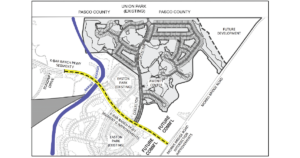 In keeping with our company’s cause for 2015 — autism awareness — we’re happy to report that a Hillsborough County charter school that caters specifically to students with the developmental disorder has opened a new and improved facility, just a few miles south of New Tampa.
In keeping with our company’s cause for 2015 — autism awareness — we’re happy to report that a Hillsborough County charter school that caters specifically to students with the developmental disorder has opened a new and improved facility, just a few miles south of New Tampa.
According to a press release, the Florida Autism Center for Excellence (FACE), cut a ribbon at its new location off E. Sligh Ave. in Tampa on August 13, which was a few days after we went to press with this issue. The school (formerly located on E. Chelsea St. in East Tampa), was chartered in 2007 with a grant from the Florida Department of Education (FDoE) and serves students ages 3-22 afflicted with a variety of autism spectrum disorders. FACE is a public charter school that is part of the Hillsborough County School District (HCSD).
“(Moving into this new facility) is very exciting,” says FACE director/principal Annie Russell. “Were moving into a facility that’s larger and newer that can accommodate more enrollment as we continue to grow and expand to serve more students in Hillsborough and the surrounding counties.”
Russell holds a Bachelor of Science (B.S.) degree in Social Science Education from the University of South Florida (USF), as well as a Master of Arts degree in Special Education Behavior Disorders, also from USF. Russell also has her Autism Spectrum Disorder endorsement from the Florida Department of Education.
Russell says that the charter school’s lease had come to an end at the previous location at Mary Help of Christians Catholic Church, and that the church was interested in adding its own private Catholic school to its campus, so FACE looked for a new space.
“(The new location) is one building instead of an open campus with open breezeways,” Russell explains. “This location is completely inside, so it provides better security and shelter from Florida’s very unpredictable weather.”
Russell adds that the new location also prevents having to expose autistic students to climate changes, going from inside to outside (into the bright light of the sun) when moving to different classrooms or the restroom, any of which could trigger a negative response from a student.
“A lot of our children have sensory issues,” Russell says. “It might be too bright, too hot, or even the sound of the lawnmower might be too much. Even just the sound of a buzzing bee, something we don’t even think about, can be really off-putting to one of our children.”
FACE incorporates “Applied Behavioral Analysis,” a mode of teaching that assists students in overcoming cognitive delays through repetition and modeling of desirable academic and social behaviors. The ABA-trained staff and small teacher-to-student ratio promotes an intimate and safe learning environment for the school’s students.
FACE’s website explains that ABA is a scientific approach to modifying behavior, improving social interaction and facilitating learning. ABA is based on the concept that behavior is acquired through interactions with the environment and that changing the events in the environment can positively shape or influence a behavior.
The website also says that children naturally learn from their environment without intervention, but children who have learning, developmental or behavioral disorders learn less from their environment than they do from their peers. These children often need a structured environment where they have opportunities to acquire the same fundamental skills that other children may pick up naturally.
ABA is used to develop basic skills, like listening and imitating, as well as more complex skills, such as reading and having conversations. ABA also helps autistic children to decrease behaviors that interfere with learning.
FACE’s website also notes that ABA breaks complex skills down into small steps, allowing the student to learn a skill in stages. The individual steps are then individually taught using prompts, which are gradually eliminated as the steps are mastered. Every time the child achieves the desired result, he or she receives positive reinforcement that keeps him or her motivated to continually improve.
Russell explains that, since classrooms in the new FACE will be located closer together and also will allow teachers to work more collaboratively. It also will allow for the integration of more technology into the classroom and even the opportunity to branch out and offer more specialties in the future. For example, Russell wants to add a physical education program catered specifically to those with cognitive disorders.
Applications for the 2015-16 school year are currently being accepted through February 28, 2016, for all grade levels.
For more info, please visit FACEProgram.org.




No comment yet, add your voice below!